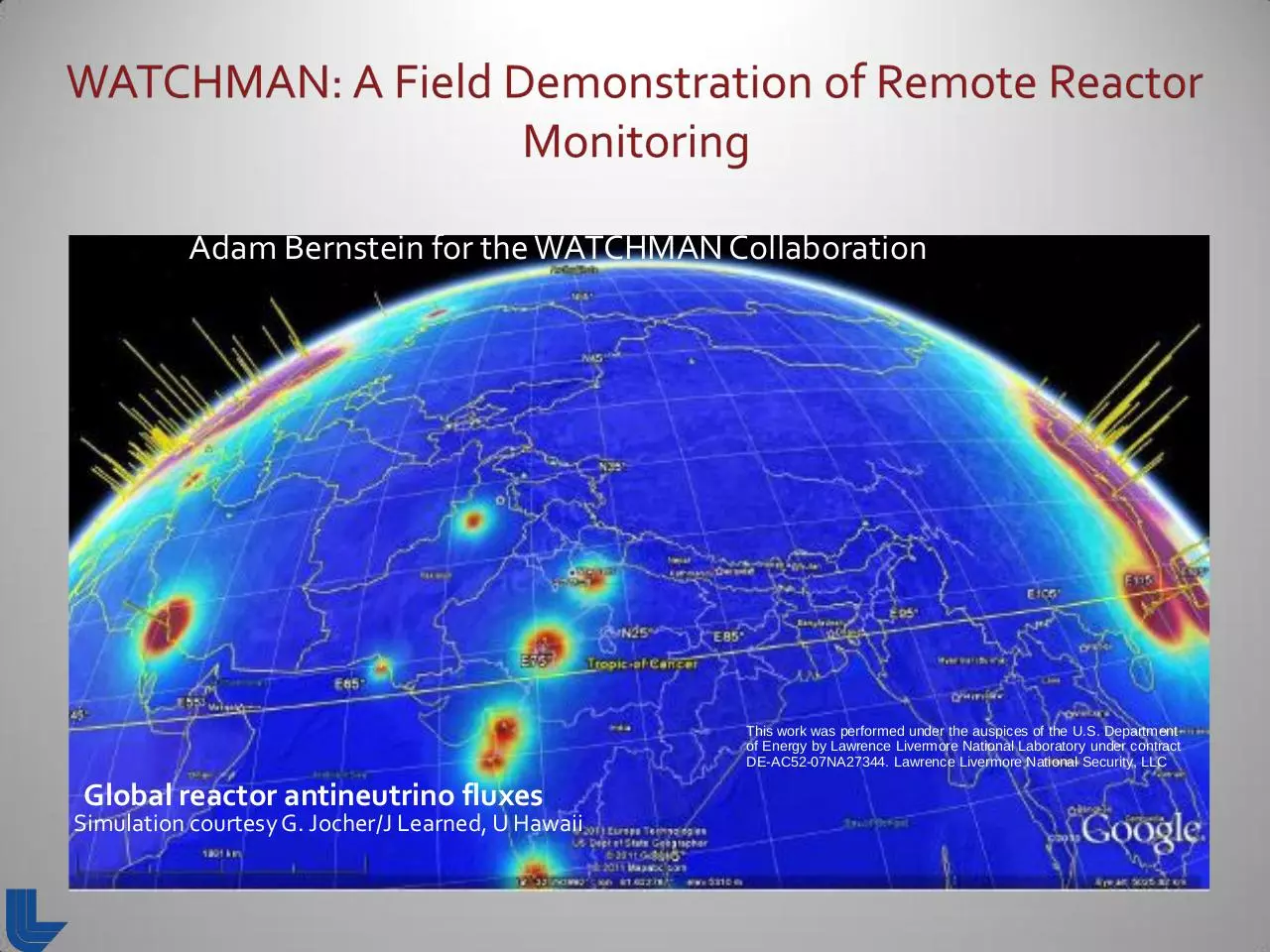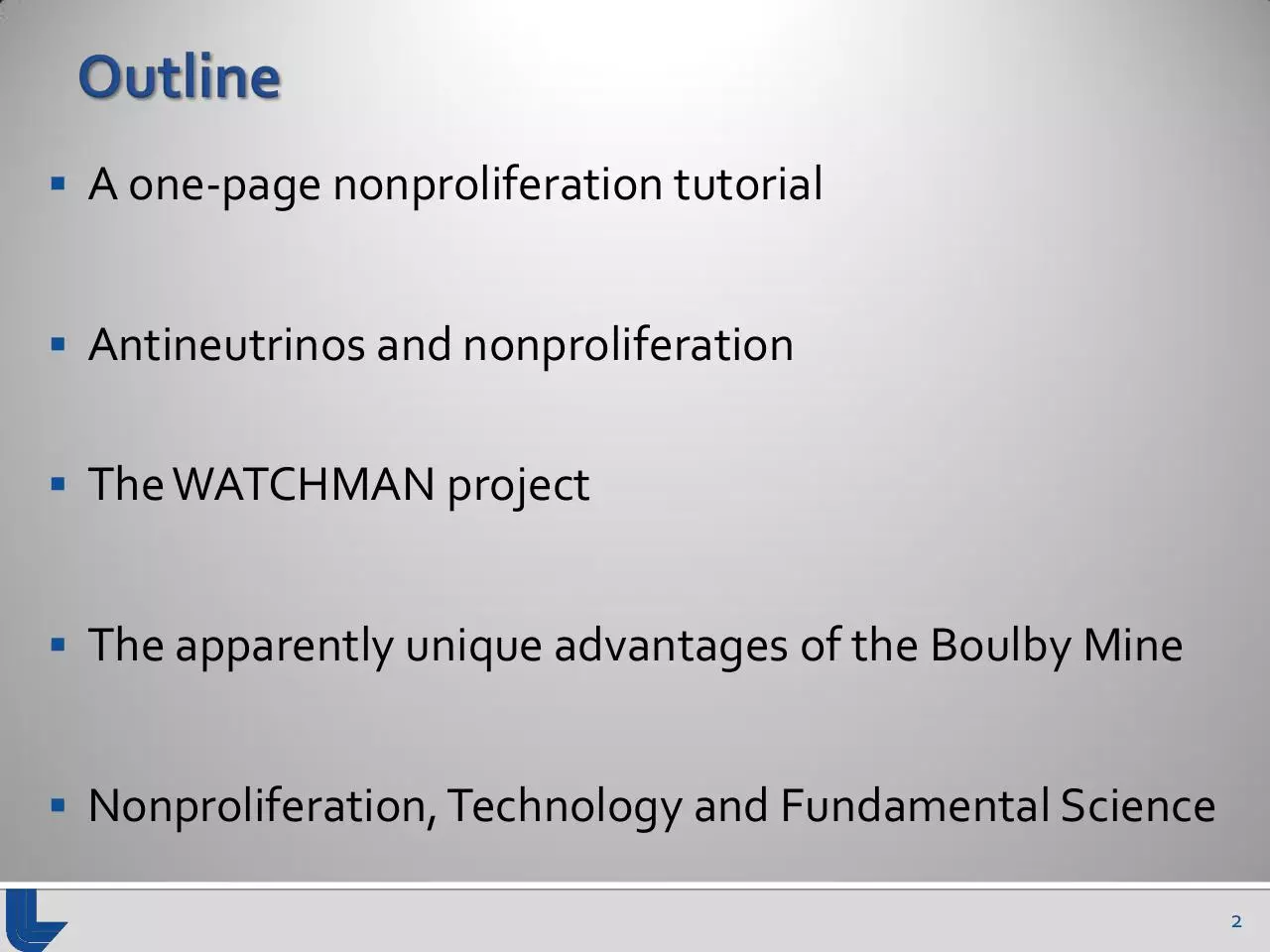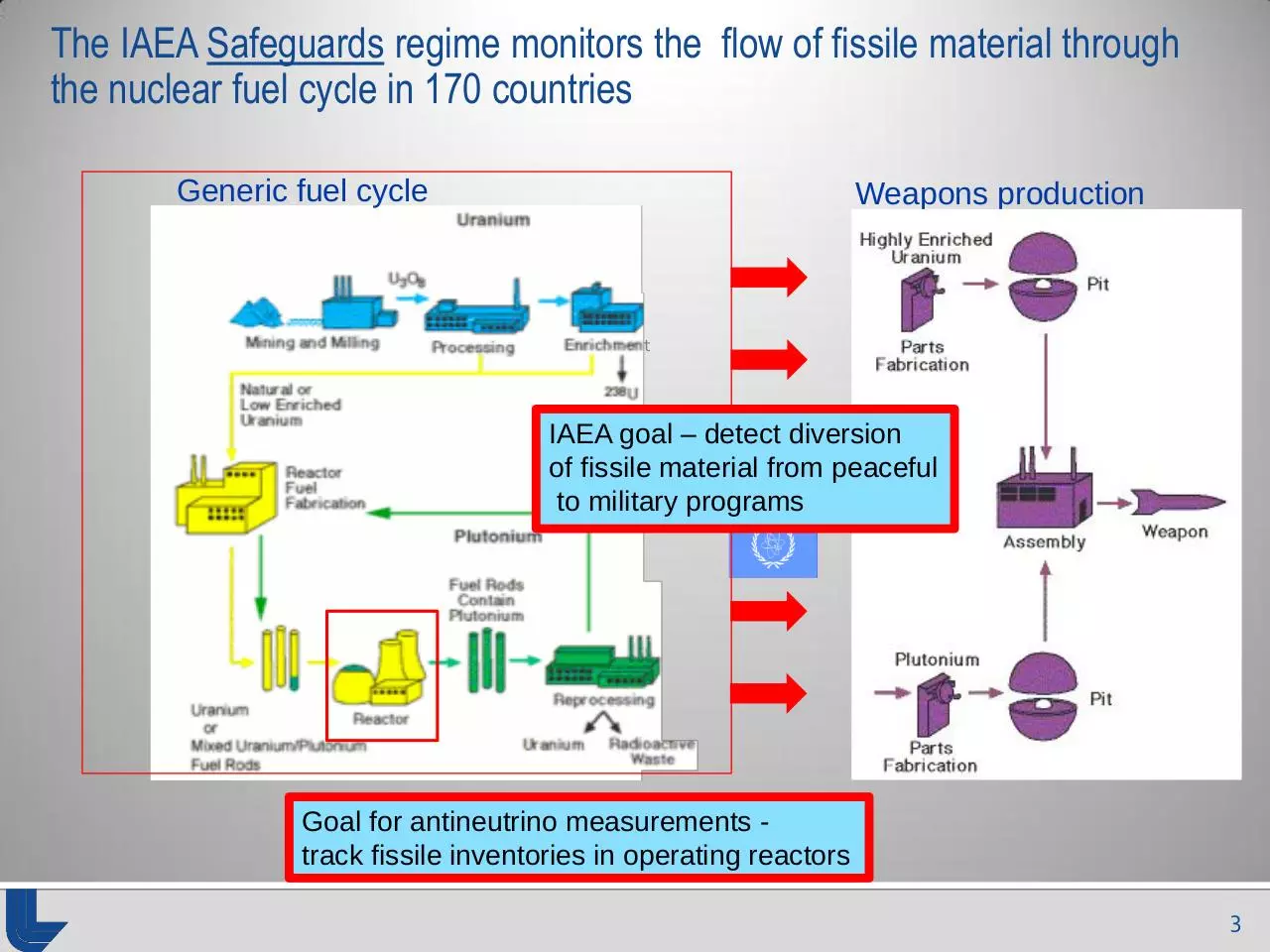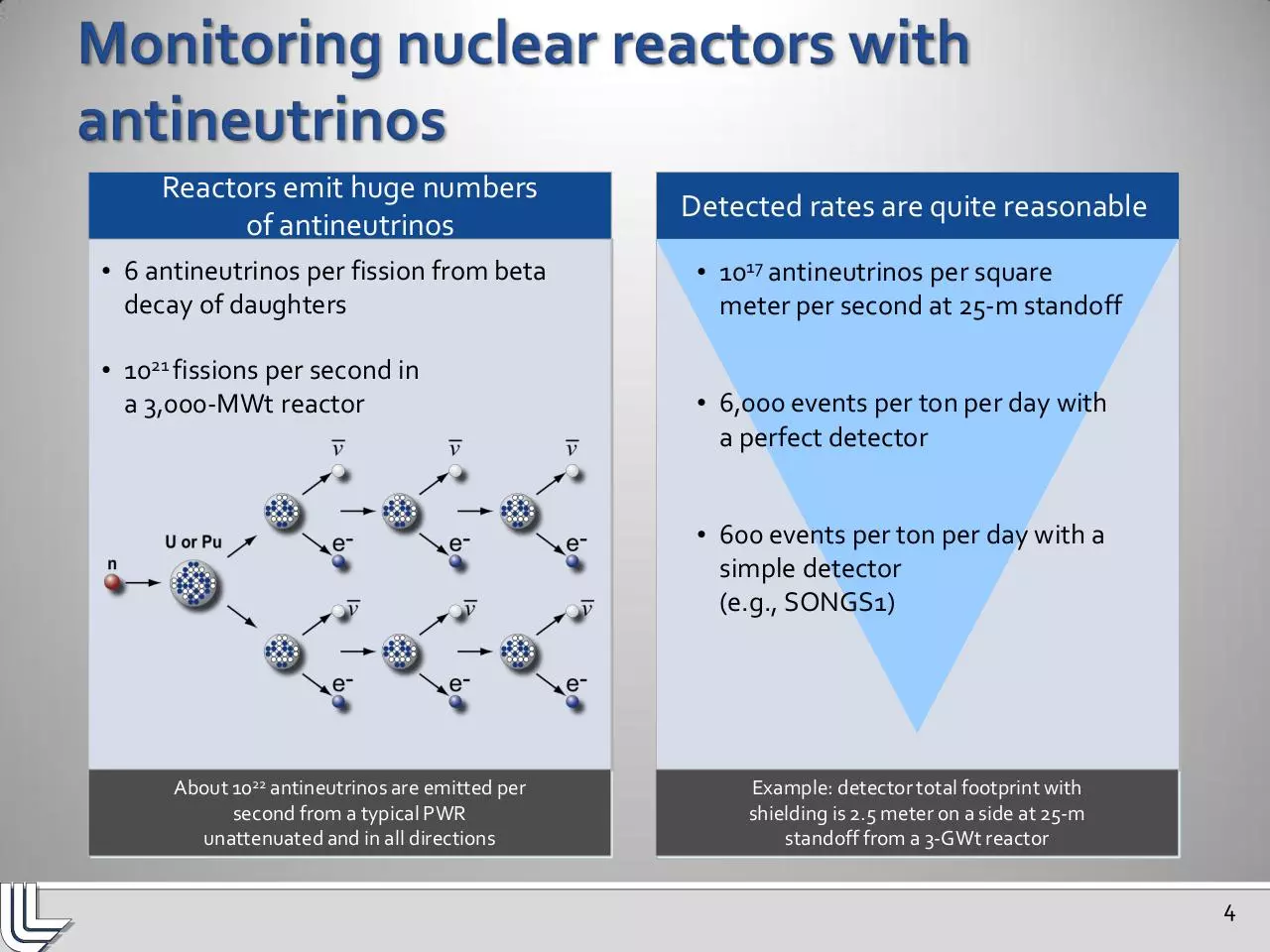Bernstein WATCHMAN ASPERA updated (PDF)
File information
Title: Slide 1
Author: Adam Bernstein
This PDF 1.3 document has been generated by Microsoft® PowerPoint® 2010 / Neevia Document Converter Pro v6.1 ( http://neevia.com ), and has been sent on pdf-archive.com on 23/11/2017 at 01:41, from IP address 185.156.x.x.
The current document download page has been viewed 446 times.
File size: 6.39 MB (32 pages).
Privacy: public file





File preview
Adam Bernstein for the WATCHMAN Collaboration
This work was performed under the auspices of the U.S. Department
of Energy by Lawrence Livermore National Laboratory under contract
DE-AC52-07NA27344. Lawrence Livermore National Security, LLC
Global reactor antineutrino fluxes
Simulation courtesy G. Jocher/J Learned, U Hawaii
A one-page nonproliferation tutorial
Antineutrinos and nonproliferation
The WATCHMAN project
The apparently unique advantages of the Boulby Mine
Nonproliferation, Technology and Fundamental Science
2
The IAEA Safeguards regime monitors the flow of fissile material through
the nuclear fuel cycle in 170 countries
Generic fuel cycle
Weapons production
t
IAEA goal – detect diversion
of fissile material from peaceful
to military programs
Goal for antineutrino measurements track fissile inventories in operating reactors
3
Reactors emit huge numbers
of antineutrinos
• 6 antineutrinos per fission from beta
decay of daughters
• 1021 fissions per second in
a 3,000-MWt reactor
Detected rates are quite reasonable
• 1017 antineutrinos per square
meter per second at 25-m standoff
• 6,000 events per ton per day with
a perfect detector
• 600 events per ton per day with a
simple detector
(e.g., SONGS1)
About 1022 antineutrinos are emitted per
second from a typical PWR
unattenuated and in all directions
Example: detector total footprint with
shielding is 2.5 meter on a side at 25-m
standoff from a 3-GWt reactor
4
Determine reactor on/off status
Measure thermal
within 5 hours with 99.9% C.L. power to 3% in one week
Sensitivity to 70 kg switch in U/PU:
known power and initial fuel content
In 2012, IAEA released an official report endorsing continued research into
several reactor monitoring applications – including long range reactor monitoring
5
~3% of signal from South
Korean reactors
@ 400 km standoff
The KamLAND detector
Per month:
- 16 reactor antineutrinos
- 1 background event
From 130 GWt of reactors
1000 tonnes scintillator
1000 m depth
6
Goal
Detector
mass
standoff
Required reduction in
bg rate relative to
KamLAND
16 events in 1 year from a 10
MWt reactor, ( 25%
accurate thermal power)
10 kiloton
~40 km
10x
1 Megaton
~400 km
100x
http://arxiv.org/abs/0908.4338
Science & Global Security, 18:127–192, 2010
Gadolinium-doped (light) water
appears to be the most viable
option for scaling to the largest
sizes
Global reactor antineutrino fluxes
7
1.
Cross border detection – ultimate limit is perhaps ~800 km
2.
Continuous surveillance
3.
Constraints on power and plutonium production rate
4.
With long range capability, no cueing information required
5.
Eventually: Reactor localization with improved directionality
or spectral measurement
My own guess at the most likely use: cooperative deployment to
confirm absence of reactors in a prescribed wide area
8
UC
Davis
Virginia Tech.
UC Berkeley
U of Hawaii
UC
Irvine
Hawaii Pacific
University
Current Phase: Two U.S. National Laboratories, 6 Universities, 4 M$, 2.25 years
9
Download Bernstein WATCHMAN ASPERA updated
Bernstein_WATCHMAN_ASPERA updated.pdf (PDF, 6.39 MB)
Download PDF
Share this file on social networks
Link to this page
Permanent link
Use the permanent link to the download page to share your document on Facebook, Twitter, LinkedIn, or directly with a contact by e-Mail, Messenger, Whatsapp, Line..
Short link
Use the short link to share your document on Twitter or by text message (SMS)
HTML Code
Copy the following HTML code to share your document on a Website or Blog
QR Code to this page

This file has been shared publicly by a user of PDF Archive.
Document ID: 0000700266.